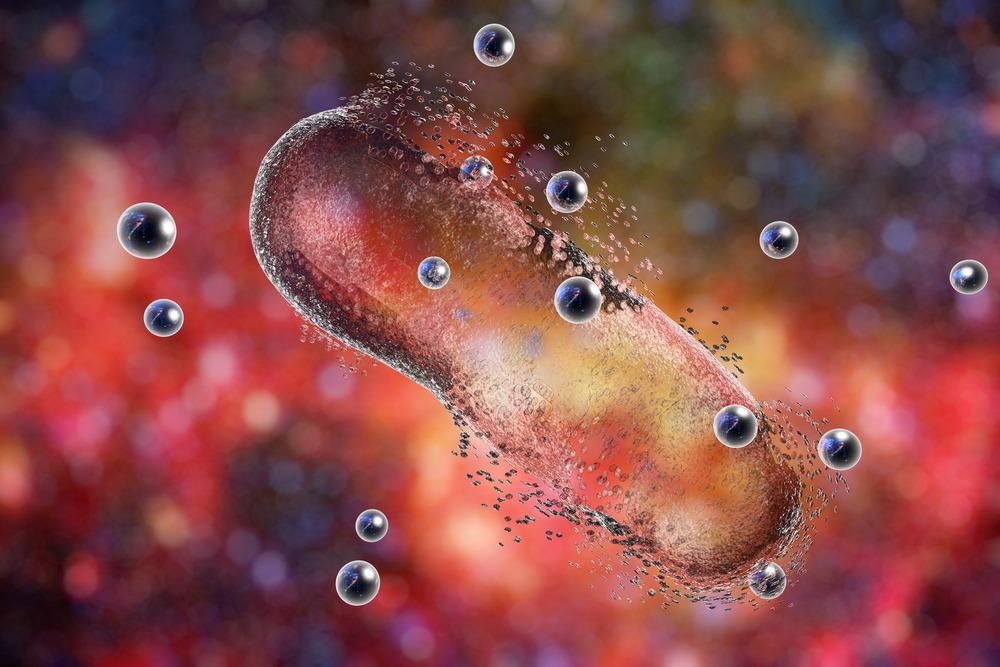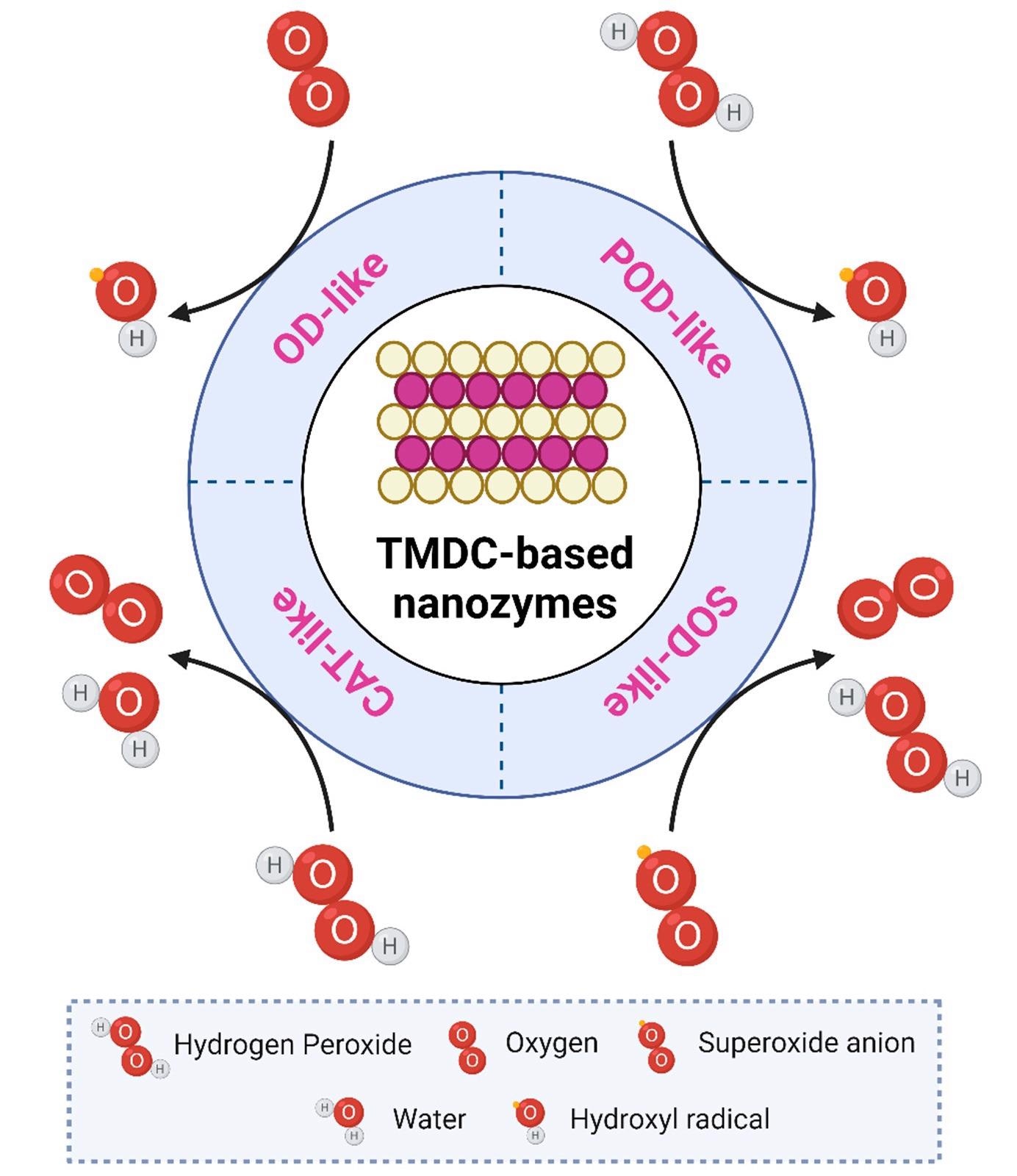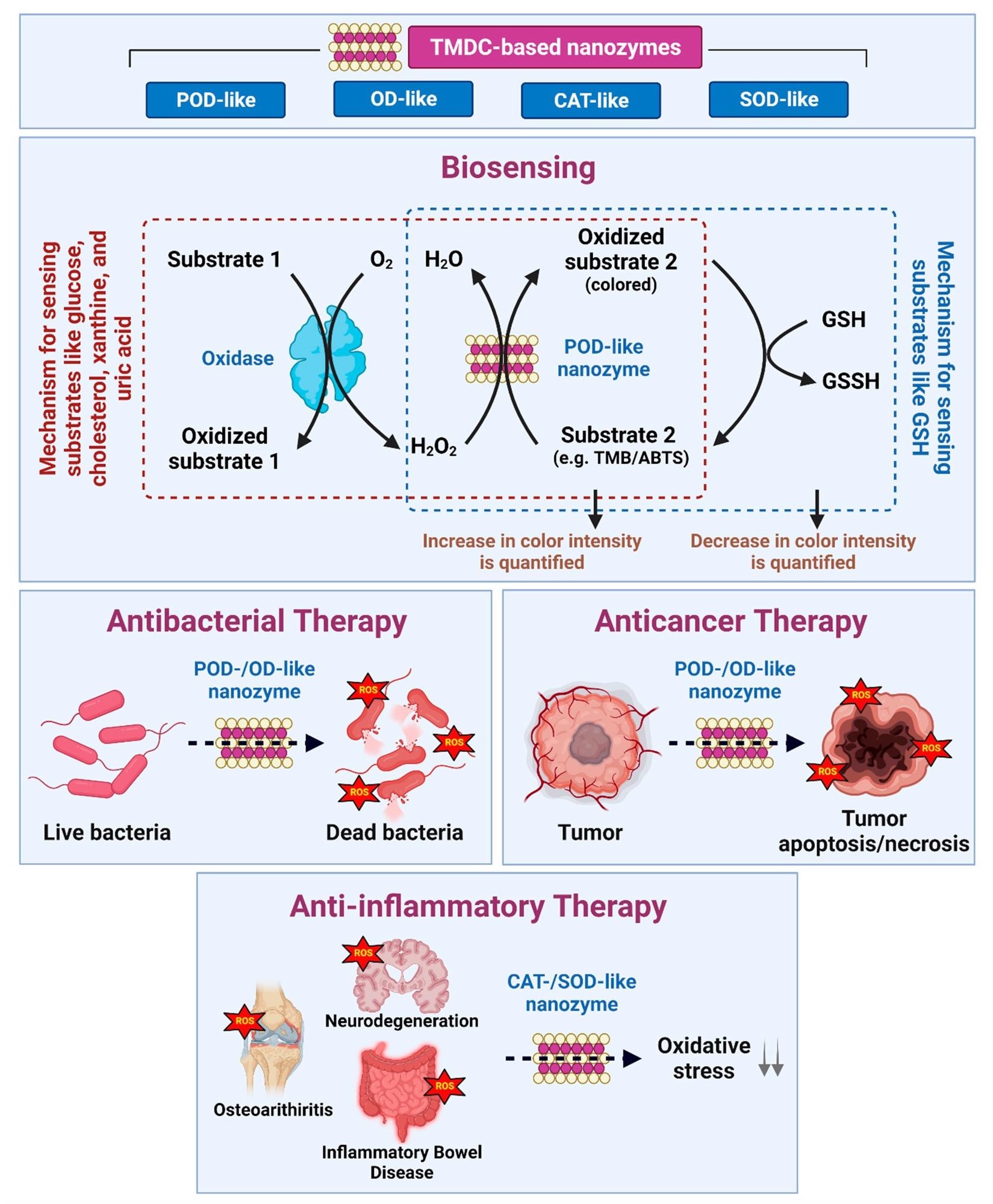Nanozymes, a form of nanoparticles with enzyme-like capabilities, are a viable replacement for biocatalysts, specifically, transition metal dichalcogenides (TMDCs) as per the latest article published in the journal Materials.

Study: Transition Metal Dichalcogenides (TMDC)-Based Nanozymes for Biosensing and Therapeutic Applications. Image Credit: Kateryna Kon/Shutterstock.com
Importance and Advancements of Nanotechnology
In recent years, remarkable developments in biomedical study and application fields have occurred, particularly in the realm of nanotechnology. A prominent example of how nanotechnologies may improve our lives is their participation in combating the COVID-19 worldwide epidemic when mRNA vaccines were developed utilizing a nanotechnology-assisted RNA delivery model.
Introduction to Theranostics
From a healthcare standpoint, there is growing optimism that nanotechnology will lead to major advancements in therapeutic strategies and diagnostics. Such lofty ambitions have prompted researchers to create new nano-platforms capable of handling both tasks concurrently. As a result, a new multidisciplinary study topic called theranostics has emerged.
Iron-based metal oxide nanocrystals, MXene, black phosphorus (BP), and graphene oxide are examples of theranostic nanomaterials. In addition to these, nanozymes (NZs) are a new class of materials having theranostic potential.
What are Nanozymes?
Nanozymes (NZs), a family of nanoparticles with enzyme-like characteristics and functionalities, have been explored for a broad variety of healthcare systems and are prospective substitutes for biocatalysts.
These properties are attributed to their intrinsic morphologies, which replicate biological enzymes’ active sites or charge/electron transmission.
The growing attention in NZs is further reinforced by the finding that these nanoparticles can be readily produced and complexed at a relatively cheap price, and their photocatalytic activity may be adjusted without jeopardizing their durability. In addition, as contrasted to bio enzymes or typical organic enzymes, NZs have enhanced operational life, durability and are easy to store.

Different enzymatic activities and their mechanisms followed by TMDC-based NZs. © Presutti, D., et al. (2022)
Development of Transition Metal Dichalcogenides
Scientists have devised new methods for producing two-dimensional (2D) nanostructures that can take the form of nanofibers, nanowires, or nanowalls. Transition metal dichalcogenides (TMDCs) are the most common type of 2D nanomaterial.
TMDCs, which have the empirical formula MX2, where M is a transition metal and X is a covalently bonded element, have demonstrated outstanding possibilities in biological functions such as biosensor applications, synthetic biology, cell imaging, and antitumor treatment.
Their distinct morphologies, large surface area, and distinctive superconductive characteristics with configurable band gaps endow them with distinct catalytic capabilities. Furthermore, the affinity of these substances with diverse physiochemical alteration techniques allows for a simple and affordable approach to creating and manipulating their catalytic capabilities.
TMDC Applications for Biosensing Functions
A biosensor is a type of analytical device capable of detecting a particular biochemical substance. Because of their inherent catalytic abilities, NZ biosensors, notably TMDC-based, have shown considerable relevance in the healthcare area, especially diagnoses, since the development of nanotechnology.
TMDC NZs have been employed to determine a wide range of biological solutes, including small biomolecules and macromolecules.
The primary benefit of TMDC NZ-based biological recognition techniques is their POD-like function, which allows them to oxidize colorimetric material in the presence of H2O2 to create colorful compounds that can be detected by calorimetric processes.
The capacity of these substances to inhibit the oxidation of chromogenic surfaces serves as the foundation for their detection.
TMDC NZs may also be utilized to identify biomacromolecules such as proteins in a straightforward method. Because of their targeted sensitivity, high stability, and capability to be manufactured in the laboratory, nucleic acid oligonucleotides sensors are used in certain TMDC NZs-based antigen identification techniques.

Summary of TMDC-based NZs, their nanozymatic activities, and biomedical applications—biosensing, antibacterial, anticancer, and anti-inflammatory therapy. © Presutti, D., et al. (2022)
Applications for Antibacterial Activities
One of the most challenging issues concerning global health is the continuous growth of instances of microbial illnesses.
Nanozyme-mediated antibacterial treatment (NABT) has just been proposed as a novel form of antibiotic treatment with wide antibacterial properties. It requires the utilization of NZs, particularly catalytic methods based on TMDC. The antimicrobial effect of TMDC NZs, together with their biocompatibility, may be beneficial throughout wound repair.
TMDC Based Cancer Therapy
Cancer is one of the top causes of mortality owing to late identification and the ineffectiveness of existing therapies. NZs, especially those based on TMDC, have lately acquired popularity in cancer therapeutics.
The scarcity of intra-tumoral H2O2 typically limits NZ-mediated cancer treatment. Recently, TMDC nanosheets were produced to overcome this difficulty. This device was able to create H2O2 by using absorbed O2 and photoexcited radicals. Furthermore, the NZ system guaranteed the effective creation of •OH and O2. •OH harmed mitochondria, whereas O2 relieved hypoxia and functioned as a reservoir of H2O2.
The creation of sophisticated theranostic systems with targeted therapy capabilities is a key problem in the field of nanomedicine.
In brief, NZs have shown to be a preferable replacement to biocatalysts in a variety of industries, including commercial, ecological, medical, and diagnostics. Despite tremendous advancement in the development of TMDC NZs, numerous features remain to be well characterized, and the creation of innovative TMDC NZs might be useful in addressing these concerns.
Continue reading: Nanosensors: The Future Nano-Energy Harvesting Element
Reference
Presutti, D., et al. (2022) Transition Metal Dichalcogenides (TMDC)-Based Nanozymes for Biosensing and Therapeutic Applications. Materials. 15(1). 337. Available at: https://www.mdpi.com/1996-1944/15/1/337
Disclaimer: The views expressed here are those of the author expressed in their private capacity and do not necessarily represent the views of AZoM.com Limited T/A AZoNetwork the owner and operator of this website. This disclaimer forms part of the Terms and conditions of use of this website.